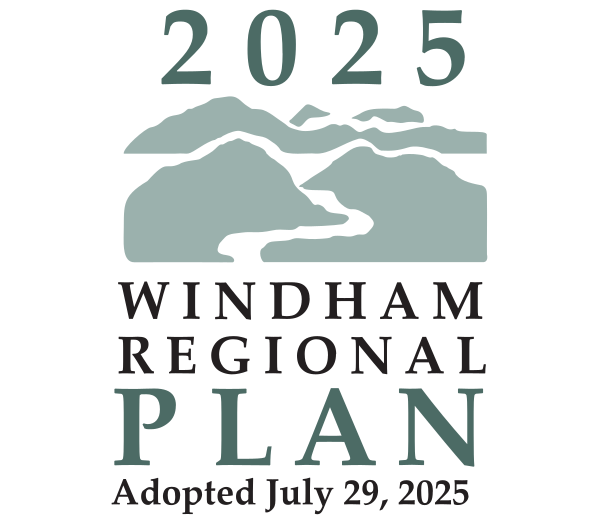Housing
Housing Trends For The Region
This chapter has shown several characteristic trends for housing throughout the region, and those trends will impact residents’ ability to find suitable, affordable housing in this region in the future. Although single-family homes may continue to be the preferred type of housing in the region, providing a mix of housing options will help meet the needs of various households and income levels, while attracting younger populations and allowing older populations to age in place. The decrease of overall household size is also a significant factor in determining the right mix of housing types for a community. Some examples of new and creative approaches that create smaller footprint homes from other regions in New England are shown in the images below.
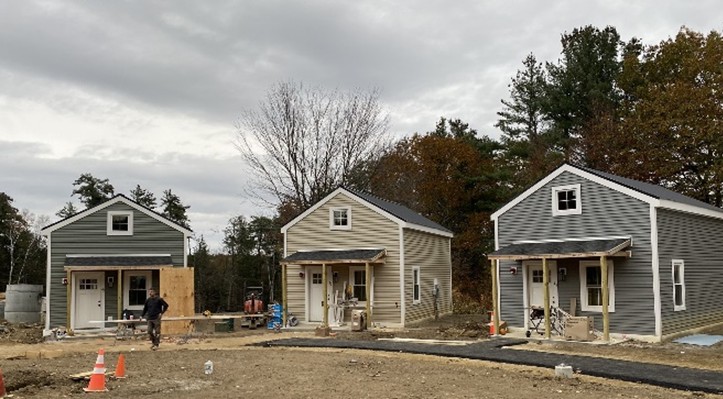
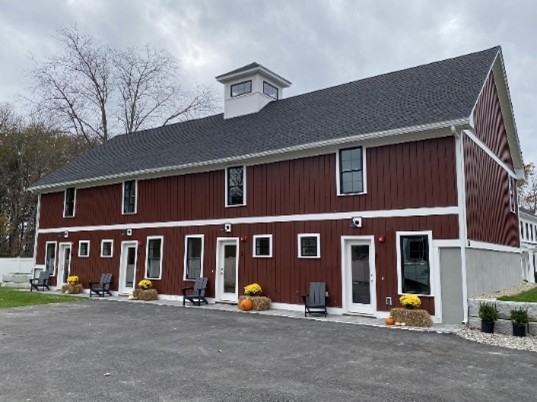
The region’s villages and downtown centers can provide many desired amenities and make it easier to access transit and other needs. Building new housing at higher densities and providing infill development opportunities in villages and downtowns is one way to begin to address the high costs of new housing development. Communities can prepare for new housing by updating their land use regulations to accommodate higher densities, promote adaptive reuse of historic structures, and even reduce parking requirements which impact housing costs. Other costs, including the costs of materials and labor, are beyond the control of communities. Additional information on tools towns can use can be found in the Land Use Section.
CONVERSION OF BROWNFIELDS TO HOUSING STOCK
Sites located within town and village centers are often complicated by the presence or potential presence of contamination, also known as a brownfield site. The Windham Region Brownfields Reuse Initiative has funding available to assess potential contamination on specific sites, develop remediation plans as needed, and complete cleanup actions. Programs at both the Federal and State level can also provide funding for cleanup. Where brownfield sites are appropriate locations for mixed housing and commercial services, it may be well worth the investment.
Brownfields site in the Windham Region have been cleanup and redeveloped for affordable housing by Windham Windsor Housing Trust and others. Examples include the Garage in Bellows Falls and Red Clover Commons in Brattleboro, both pictured below.
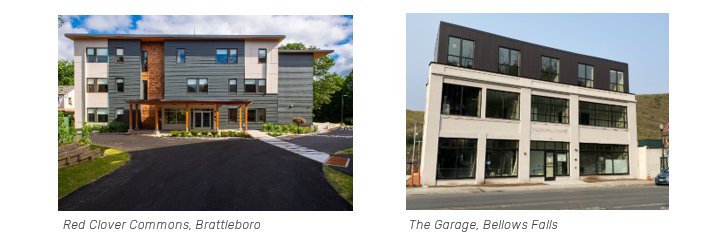
Communities can prepare for new development, including an increase of density in existing homes that add new units, by planning for the development of water and/or wastewater infrastructure. In many of our smaller towns, the lack of sewer and water infrastructure is a significant limitation to creating new affordable housing (see also the Community Utilities, Facilities, and Services Section). Londonderry, Grafton, and Jamaica are investigating the development of new soil-based wastewater systems for their village centers.
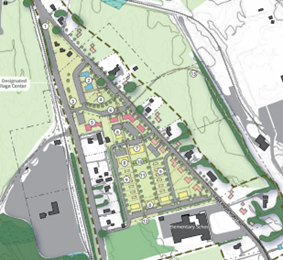
Vernon Village Center Concept Plan
Wilmington, Dover, Putney, Londonderry and Brattleboro all have Housing Committees and, except Putney, have developed housing needs assessments to explore what they can do as a community. Some towns may even consider development of a new town center, such as Vernon who developed new Village Center Concept Plan. A proposal for up to 300 new units at the Winston Prouty Campus in Brattleboro also has the potential to significantly address the region’s needs.
Since 2020, the Southeastern Vermont Housing Coalition has taken on the role of regional convener for all organizations interested and involved in housing throughout the Windham Region. The Coalition has monthly meetings that address various issues and concerns related to housing including landlord groups, affordable housing organizations, homeless advocates, state agencies and municipalities. This group will continue to lead and facilitate the discussion around housing and to support efforts to increase housing for everyone, especially those who need it most.
